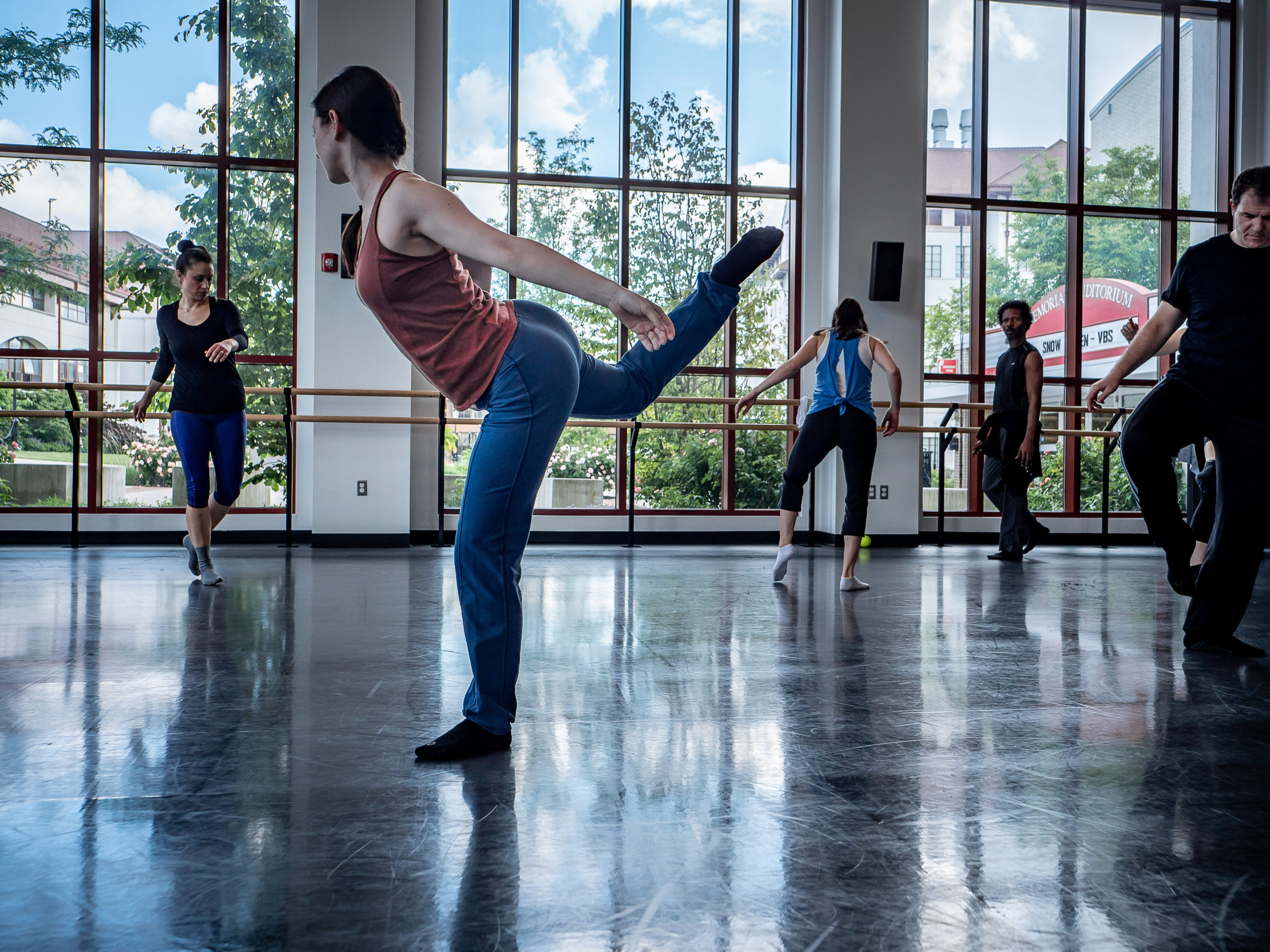How Harlequin Floors Creates A Springboard For College Dancers
A lot goes into a successful dance career—drive, facility, and hours upon hours of training are just the beginning. The kind of floor on which a dancer spends those hours can make the difference between fearless dynamism and hesitancy, or even an injury-free season and one spent rehabilitating. For decades, Harlequin Floors has made it its mission to supply dance organizations with the best quality flooring so their artists can thrive.
Dance Teacher editorial director Reanne Rodrigues recently spoke about the importance of proper flooring with four leaders from dance programs in higher ed: Susan Stowe of Point Park University, Nancy Lushington of Marymount Manhattan College, Elizabeth McPherson of Montclair State University, and Melanie Person of The Ailey/Fordham BFA Program. They discussed how the right floor can impact the longevity—and success—of their students’ careers, as well as why their departments use Harlequin Floors. Throughout the conversation, three themes came up again and again when it came to why educators trust Harlequin: reliability, safety, and, versatility.
Reliability
To ensure dancers’ comfort, Point Park uses the Harlequin Studio B flooring for its studios and performance spaces. “Our dancers know that they can transition from studio to stage knowing that the surface they’ll be dancing on will be consistent, clean, and durable,” says Susan Stowe, Point Park University’s chair of dance. That dependability extends not just between different spaces, but also over time. “The consistency of the Harlequin line has been amazing,” she continues. “I think we’ve only had to replace the floors in our hardest-used studios a few times in the last 20 years.”
Now an associate professor of dance at Marymount, Nancy Lushington recalls navigating divots in the floor while dancing on the Metropolitan Opera House stage. As a performer, having a reliable surface, she says, “made a huge difference in what you could do and how it felt while you were dancing.”
Proper maintenance also goes hand in hand with a floor’s durability. Lushington warns against outsourcing cleaning services or using non-Harlequin products, which could cause damage or slick spots. She recommends connecting with Harlequin directly about maximizing your floor’s lasting power.
Safety
“Our dancers’ health and safety are paramount, and the demands on their bodies are many,” says Stowe. Properly sprung floors, with just the right amount of traction and give to the surface, are a key component in minimizing the risk of injury.
As the director of The Ailey/Fordham BFA Program, Melanie Person says that safety has been the driving factor behind the Ailey organization’s choice to use Harlequin floors for decades. “The selection really has to do with the safety and support the dancers gain from working on this kind of flooring,” she says.
Part of that support involves a safe landing surface for jumping, McPherson explains. The appropriate amount of give, which can be visible where the wall meets the floor, means that the flooring offers a cushion that protects a dancer’s joints. Rodrigues notes that as a dancer, knowing that a surface will protect your body allows for greater confidence and, ultimately, performance. This is particularly important for dancers who aim to challenge themselves and grow rapidly in university programs.
Versatility
Over the past 10 years, dance training in higher education has shifted toward greater versatility to reflect choreography and repertory in the professional world. To prepare their students for success in their careers, college dance programs require flooring that allows for seamless transitions amongst different genres and dance shoes.
“We want to provide the best possible conditions for a dancer to train in,” says Person, “and part of that is the flooring to support all the many dance techniques and modalities that they will train in.” This is also the case, she continues, when it comes to performance spaces being able to accommodate diverse repertoire.
Lushington describes her students’ abilities to go from LaDuca heels to tap shoes, ballet slippers, bare feet, or socks in Marymount’s studios. “The Harlequin floors function equally well with all those training styles,” she says.
McPherson agrees. “There’s the right amount of traction,” she says, explaining that whether her students are in socks, pointe shoes, or bare feet, the floor is neither too slick nor too sticky. “The students are feeling supported in doing what they need to do.”
This article was originally posted on December 3, 2024 by Dance Magazine.
